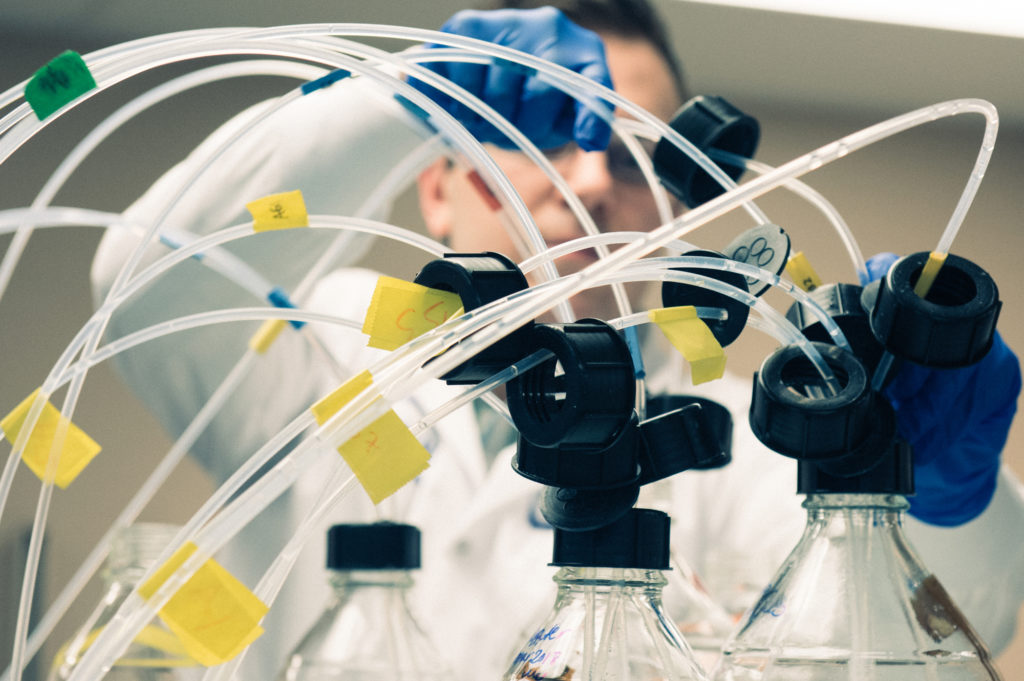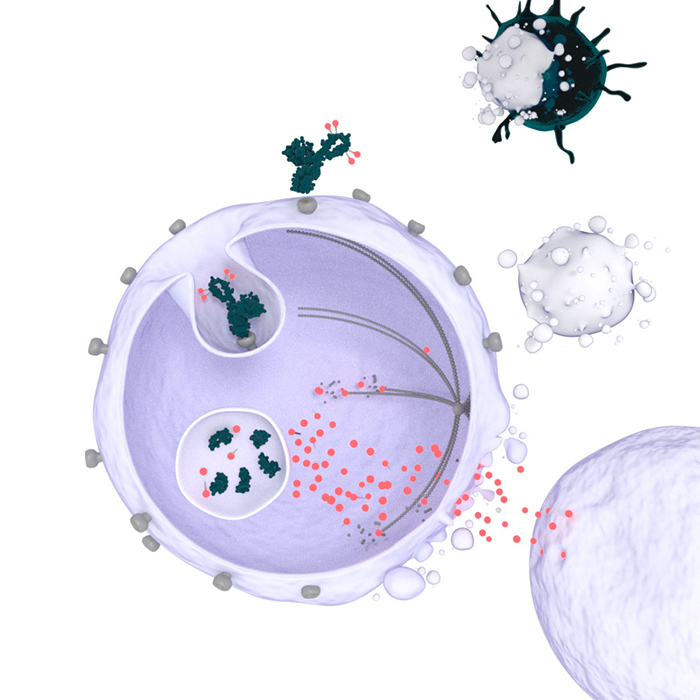
Our
Science
We believe ADCs have a promising and durable role in cancer care. This belief has driven our work for over four decades. It’s what has led us to our leadership position in the ADC field, and it’s why everything we do is about developing the most precise, targeted cancer therapies.

Antibody-Drug Conjugates
The concept of an ADC is simple: select a cancer-killing toxin and attach it to a specific antibody using a biodegradable linker. Developing an effective ADC, however, is far more challenging. It takes years of experience and expertise to select the right combination of cancer targets, toxic payloads, antibodies, and linkers to develop an effective, well-tolerated ADC.
Targets
Understanding the cancer target itself the first and most important step in the development of an ADC. Our scientists have deep expertise in target selection, including assessment of appropriate levels of expression on tumor versus normal tissue and rate of internalization.
Toxic payloads
Our portfolio of toxins is rich and comprised of different types of cancer-killing agents, including our tubulin-acting maytansinoids and our DNA-acting IGNs, which are much more potent than traditional chemotherapy.
antibodies
We have established knowledge in the development of tumor-targeting antibodies, having created one of the few CD37-targeting antibodies.
Linkers
Built with stability and optimizing payload efficacy in mind, our engineered linkers are a hallmark of our ADC designs. Our scientists have created linkers that are stable outside cancer cells but are also able to break—or cleave —once inside cancer cells. The result is a released payload that is also able to enter and kill neighboring cancer cells.

